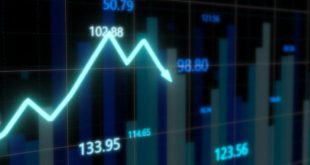Kenneth Rogoff (Kenneth Rogoff)
Last year a phenomenal market volatility is largely due to the real risks and unpredictability associated with such factors as economic growth in China, the situation with European banks, a surplus of oil supplies. In the first two months of this year, many investors began to panic, as if even the USA, where the economic growth is one of the most favorable in the world can fall into recession. Among the experts participating in the monthly survey of Wall Street Journal, 21% said that the recession is already around the corner.
I won’t deny that the risks exist. Quite a serious blow to the Chinese economy or the financial system of Europe to push the world economy off the rails slow but growth, in the direction of recession. Even more frightening is the thought that next year the presidential power in the U.S. could turn into a reality TV show.

However, from a macroeconomic point of view the fundamentals are not so bad. Employment figures are good, with consumer confidence all right; the share of oil sector in GDP is not so great that the collapse in oil prices has put the U.S. economy to its knees. In reality, the most underappreciated source of current market sentiment is a fear of the onset of a new big crisis.
You can see certain Parallels between today’s troubles and market sentiment in the first decade after the Second world war. And in fact, in both cases there is extremely high demand for safe assets. (Of course, the big role in the post-war period played policy of “financial repression”, where governments literally shoving their debts in the pharynx of private investors at below-market rates).
Even when after the Second world ten years, the famous economist John Kenneth Galbraith expressed the view that the world could face a new depression, and the markets were in great excitement. People still clearly remembered how in the early years of the great depression the U.S. stock market fell by 90%. In the 1950s, it was not difficult to imagine that all over again can go wrong. The world has just experienced a series of disasters, including two world wars, a global flu epidemic and the depression. In addition, sixty years ago, the spectre of nuclear war seemed very real.
Today people don’t need any reminders about how deeply and quickly collapsing securities markets. After the financial crisis of 2008, U.S. stocks dropped more than 50%. In some countries, stock markets fell significantly harder. For example, in Iceland, the market has fallen by more than 90%. It is not surprising that after the recent market drop 20%, many thought, and would doing even worse (and how) and whether the fear of a new recession self-fulfilling prophecy.
The idea is that when investors are too concerned about the threat of a recession, and stocks fall too much, then the bearish sentiment is beginning to penetrate into the real economy via lower costs that brings all the frightening decline. And this may be true, although markets tend to overestimate their own influence on the real economy.
On the other hand, the fact that the US has managed to forge ahead despite adverse global conditions, indicates a strong domestic demand in the country. But the markets of this fact, it seems, is not impressive. Even investors, preserving cautious optimism about the prospects of the U.S. economy, worried that the U.S. Federal reserve will treat the growth of the economy as a reason to continue the policy of increasing interest rates, creating thus a huge problem for developing countries.
Of course, there are other explanations for volatility along with fear. The most simple — it’s actually very bad. Specific risks may not be as great as in the 1950s, but more of them, the markets will start with a much higher and inflated positions.
Moreover, financial globalization has significantly increased the interconnection of world markets, increasing the magnitude of transmitted shocks. In global debt markets there are large pockets of potential weakness, with the current loose monetary policy helps to hide these underlying problems. It also points to the lack of liquidity in the leading markets, leading to strong price fluctuations; illiquid market, a small change in demand or supply can sometimes lead to large price changes, while market equilibrium is restored.
However, the most convincing explanation yet in other markets I’m afraid that at a time when external risks are realized, the authorities ‘ response would be ineffective. Of all the weaknesses exposed by the financial crisis, political paralysis, is the most profound.
It is sometimes said that the authorities are not involved in stimulating demand. This is true, but it’s not the whole picture. The biggest issue hanging over the world a heavy burden today is a shameful failure of structural reforms. Productivity growth, at least temporarily stuck at a low rate, and global population in the long term is reduced, so it is a problem on the supply side, not the lack of demand, are the real limiter of economic growth in developed countries.
In the long term it is the supply factors determine the growth of the economy. If States are unable to undertake deep structural reforms after the crisis, then it is difficult to assume when this can happen. Running the country as if it is a television reality show — with one eye, always look at the ratings, is unlikely to do this work.








